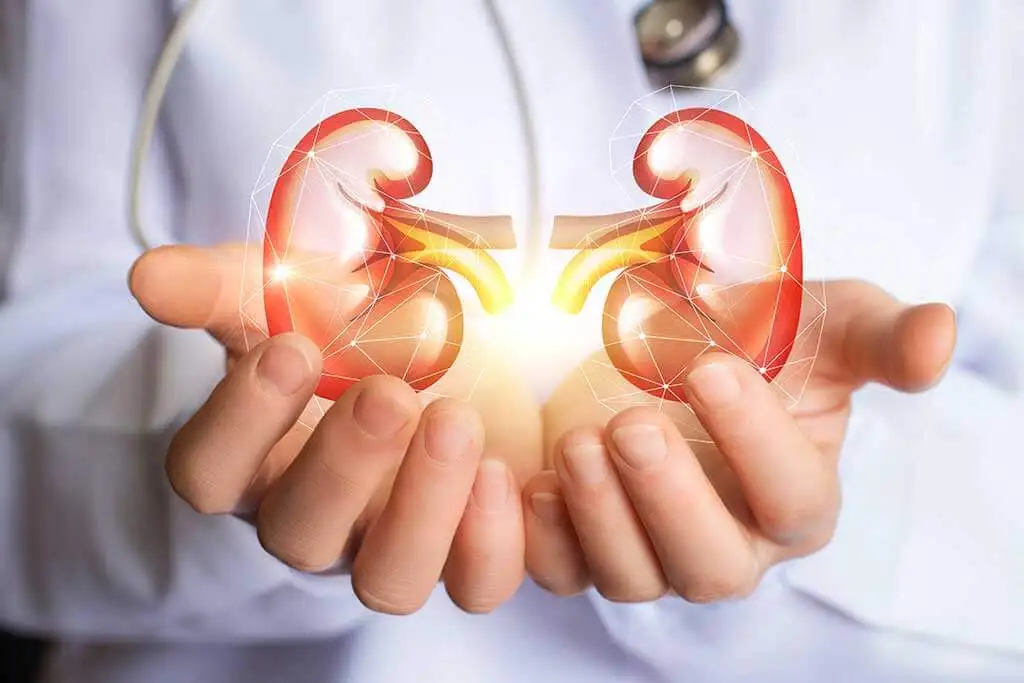Exercise with Hyperkalemia: How to Do it Safely

Hyperkalemia is a condition in which your body has high levels of potassium in the blood. With this situation, you can perform physical activity, but with specific controls. However, it is possible to exercise with hyperkalemia, and we’re going to tell you all about what you need to keep in mind when doing so.
Potassium is an essential electrolyte mineral that the body needs for many biological processes, such as muscle contraction and nerve transmission. However, excess levels can be harmful.
The normal range is 3.5 to 5 millimoles per liter (mmol/L) in the blood. If you’ve been identified as having hyperkalemia (more than 5 mmol/L), see a specialist so that he/she can conduct the best plan for your health. You can then design your exercise program accordingly.
The relationship between exercise and hyperkalemia
The kidneys are responsible for eliminating excess potassium from the body through the urine. If you have certain health conditions, such as heart disease, kidney disease, or diabetes, the risk of hyperkalemia increases.
When these potassium levels are high, exceeding the normal range, you may have symptoms such as the following:
- Vomiting or nausea
- Chest pain
- Difficulty breathing
- Palpitations
In some cases, emergency medical assistance is necessary because a person’s life may be in danger.
When you perform any type of exercise, your muscles lose potassium, causing an increase in its levels in the blood. This is why a sudden and excessive increase can lead to heart problems in what is known as exercise-induced arrhythmia.
Despite this, if you exercise regularly, you’re likely to have a healthy lifestyle. In this context, the risk of arrhythmia is considerably reduced.
At the other extreme, if you’ve already been diagnosed with hyperkalemia for some underlying reason (you’re diabetic, for example), keep in mind that exercise and increased blood potassium can go hand in hand.

We think you may be interested in reading this, too: Low Blood Pressure: How to Regulate it and What to Do When it Drops
Tips for exercising safely if you have hyperkalemia
Your doctor will assess the risks in exercise routines and recommend one that’s reliable for you, taking into account factors associated with hyperkalemia, such as your age, whether you have other health conditions, whether your condition is acute or chronic, and the extent of damage to your kidneys and cardiovascular system.
The next step is to exercise. To do this safely, we’ve grouped together several tips that you can take into account.
1. Try to follow a routine
It’s best that you always schedule and perform the routine at a certain time. It will also help if you don’t opt for times close to the time you go to sleep; this greatly affects the replenishment of intramuscular potassium.
2. Avoid overexertion
Try to avoid high-intensity exercises when you start your routine. Save them for the end or as the bulk of the workout progresses.
Start with low intensity and increase the level gradually. If you feel like you’re overdoing it, don’t push yourself any harder and try to rest. If you increase your work level little by little, you’re going to ensure that there’s no rapid spike in your potassium volumes.
3. Walk
This is one of the best training options for hyperkalemia patients. You can increase walking speed and time over the weeks.
Like this article? You may also like to read: Oncological Blood Tests: What Are They and When Are They Done?
4. Remember that rest is important
Don’t overexert yourself and give rest its rightful place as an effective recovery mechanism during physical activity. Let your muscles relax after each workout.
This reduces the risk of injury, and promotes potassium replenishment and the healing of muscle groups. This last process prevents too much potassium from entering the circulation.
5. Hydration is essential
You should always stay hydrated during exercise. If you have an underlying kidney disease, you should consult with your doctor about the best way to manage your water intake during your training routine.
There are calculations that a professional can make to determine how much fluid should enter your body without overloading the kidneys while at the same time avoiding dehydration.
6. Don’t forget to warm up and stretch
Before starting your routine, it’s recommended that you practice some light warm-up movements that will increase your flexibility. Make sure you also stretch after you finish.

Balance exercise and hyperkalemia with a healthy lifestyle
One of the biggest benefits you can get from adapting your lifestyle to this situation is to follow a low potassium diet. The main dietary sources of potassium for adults are potatoes, coffee, milk, and tea.
In addition, it’s recommended that you avoid foods that contain high levels of potassium, such as legumes (beans, lentils, and soybeans). You should also reduce your consumption of vegetables such as pumpkin, broccoli, and spinach.
Animal proteins are necessary, and a nutritionist can guide you on the recommended daily amount so as not to strain your kidneys. In this way, you take care of the filtering organs and get amino acids that are key to sustaining the training routine.
Your lifestyle can go hand-in-hand with your desire to exercise and the reality of hyperkalemia.
All cited sources were thoroughly reviewed by our team to ensure their quality, reliability, currency, and validity. The bibliography of this article was considered reliable and of academic or scientific accuracy.
- Camargo F. Hipopotasemia e hiperpotasemia. Rev. Act. Clin. Med. 2013. 39: 2029-2035.
- Jiménez I. Impacto del ejercicio físico intradialítico en pacientes con enfermedad renal crónica. Universidad de Valladolid. España: 2019.
- Casas, Duván Mauricio Gallo, and Mauricio García Cardona. “Síndrome de QT corregido prolongado y su relación con la actividad física deportiva.” Revista Médica de Risaralda 12.2 (2006).
- Vera Carrasco, Oscar. “Hiperkalemia.” Revista Médica La Paz 24.1 (2018): 63-69.
- Serra R, Bagur C. Prescripción de ejercicio físico para la salud. Primera edición. España: Editorial Paidotribo; 2004.
This text is provided for informational purposes only and does not replace consultation with a professional. If in doubt, consult your specialist.








